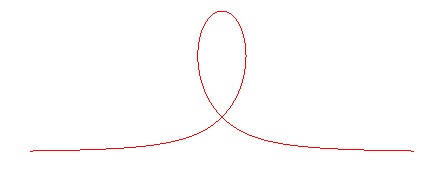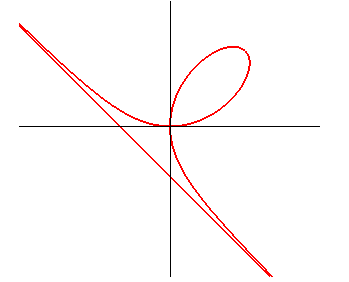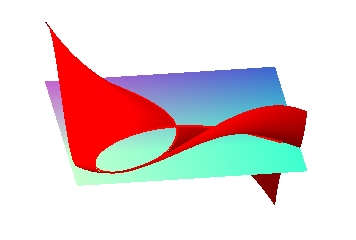CARTESIAN FOLIUM

| next curve | previous curve | 2D curves | 3D curves | surfaces | fractals | polyhedra |
CARTESIAN FOLIUM

| Curve studied by Descartes and Roberval in 1638 then
by Huygens in 1672.
From the Latin folium "leaf". René Descartes (1596-1650): French philosopher, mathematician and physicist. Other name, given by Roberval: jasmine flower. |
 |
Cartesian equation: Polar equation: Cartesian parametrization: Rational cubic with a double point. The area of the loop is equal to that of the domain located between the curve and its asymptote (of equation x + y = –a); common value: 3a2/2. |
The Cartesian folium is, in general, not defined by a
geometrical property, but by its Cartesian equation, given above.
The Cartesian equation in a frame turned by p/4
with respect to the previous one is:
where b =
,
equation to relate to that of the Maclaurin
trisectrix:
.
Therefore, the Cartesian folium is none other than the image of this trisectrix
by a dilatation of the axis Ox by a ratio
.
The Cartesian folium is therefore also a cissoid of an ellipse and a line (images by the above transformation of the circle and the line associated to the Maclaurin trisectrix), so a cissoid of Zahradnik.
See also trident of
Newton.
 |
The cubic
surface |
| next curve | previous curve | 2D curves | 3D curves | surfaces | fractals | polyhedra |
© Robert FERRÉOL 2017